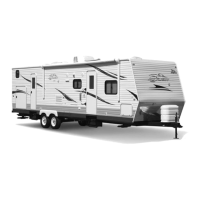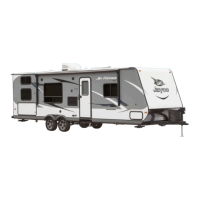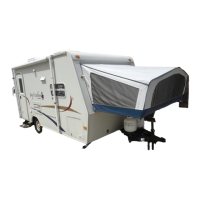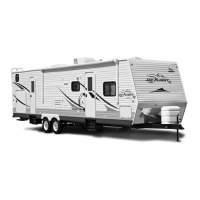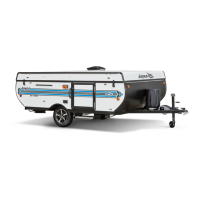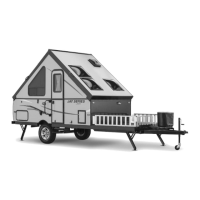48
5. Turn the tongue jack crank to raise the coupler above the hitch ball.
6. Level the RV (front-to-back) with the tongue jack crank.
7. Lower stabilizer jacks (If applicable).
8. Pull the tow vehicle away.
1. Drop the landing gear (important!) See the operator’s manual for proper operation.
2. Disconnect the wire harness/connector plug and breakaway switch lanyard.
3. Drop the truck tailgate (if applicable).
4. Gently put your truck into reverse (do not give it any fuel/acceleration). This eec-
tively moves the kingpin o the locking bar that will allow you to disengage it.
5. Step on brake and apply parking brake.
6. Disengage the locking bar and unhitch.
7. Pull the tow vehicle away.
8. Adjust the fth-wheel height for proper front to back leveling of the RV.
Awnings (if so equipped)
Keep your awnings clean and in good condition to prevent costly repairs.
Keep the awning fabric clean. For detailed cleaning information, refer to the
manufacturer’s owner information.
Do use insecticides or other sprays near the awning fabric. These can cause
stains, and could adversely aect the fabric’s ability to repel water.
Do expose the awning to adverse environmental conditions, corrosive agents,
or other harmful conditions.
Do allow the corner of the entry door to contact the awning fabric. Otherwise,
premature wear or tearing of awning fabric could occur.
close the awning (for storage) when wet. The combination of moisture and
dirt could result in mildew, discoloration, and stains. If it is necessary to roll up
awning (temporarily) while it is wet, make sure you roll it out and let it dry (as
soon as conditions allow) before rolling it up again.
Awnings must be closed (and secured) while the RV is in transit.
Keep clear of arm assemblies while opening, adjusting or closing the aw-
ning. Failure to obey this caution could result in injury and/or property
damage.
Always operate the awning according to the instructions.
Periodically check that the fasteners are tight (tighten if necessary).
Keep the awning fabric and arms clean.
The eects of wind and rain on an awning are unpredictable and can cause se-
vere damage to the awning and/or the recreation vehicle. Retract the awning:
If wind or extended periods of rain are expected
If you leave the RV unattended for a length of time, to avoid unexpected
climate conditions.
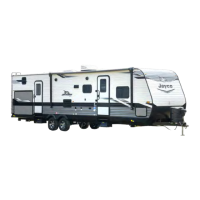
